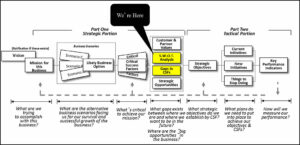Accurate Gap Assessments Leads to Tangible Actions Gaps may likely exist:
The gap needs to be done twice. What is it currently and what will it be in three years (or the life of the plan)? This will reveal how much effort will be required over the life of the plan to close gaps. |
Preparing a S.W.O.T. Analysis & Your Gaps

Assess the Difference Between Your Current Performance/Position and the Critical Success Factor as Described
(What Obstacles Do We Have to Overcome to Achieve the Mission?)
This process must start with a good S.W.O.T. (strengths, weakness, opportunities & threats) analysis. We must be honest with ourselves if we are to identify the right things to implement. The S.W.O.T. is the background work you need to do so you can realistically assess the gaps.
The gaps need to reflect the real condition. It is of no value to the process and the organization to exaggerate the current condition of reality. The more honest we are; the more likely we are to find break-through solutions to address the gaps.
The Gap assessment must accurately reflect where you are in each CSF.
By not being accurate or honest, you will mislead yourselves into thinking you are better than you are.
The Gap assessment we teach you here is both quantitative so you can compare each CSF to the other and qualitative a narrative sense (business language).
In this section we show you how best to conduct a SWOT analysis and use it effectively to complete a Gap assessment.

